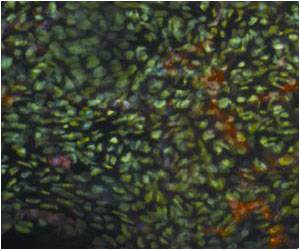Regenerative medicine has come a long way in the last decade or so.

All of an individual's cells have the same DNA, yet these cells become programmed, as the organism matures, into different types such as heart, or lung or brain. To achieve this different genes are more or less permanently switched off in each cell lineage. As an embryo grows, after a certain number of divisions, it is no longer possible for cells which have gone down the pathway to become something else. For example heart cells cannot be converted into lung tissue, and muscle cells cannot form bone.
One way to reprogram DNA is to transfer the nucleus of a mature cell into an unfertilized egg. Proteins and other factors inside the egg alter the DNA switching some genes on and other off until it resembles the DNA of a pluripotent cell. However there seem to be some difficulties with this method in completely wiping the cell's 'memory'.
One of the mechanisms regulating the activation of genes is chromatin and in particular histones. DNA is wrapped around histones and alteration in how the DNA is wound changes which genes are available to the cell. In order to understand how nuclear reprogramming works Dr Gurdon's team transplanted a mouse nucleus into a frog oocyte (Xenopus laevis). They added fluorescently tagged histones by microinjection, so that they could see where in the cell and nucleus the these histones collected.
Prof Gurdon explained, "Using real-time microscopy it became apparent that from 10 hours onwards H3.3 (the histone involved with active genes) expressed in the oocyte became incorporated into the transplanted nucleus. When we looked in detail at the gene Oct4, which is known to be involved in making cells pluripotent, we found that H3.3 was incorporated into Oct4, and that this coincided with the onset of transcription from the gene." Prof Gurdon's team also found that Hira, a protein required to incorporate H3.3 into chromatin, was also required for nuclear reprogramming.
Dr Steven Henikoff, from the Fred Hutchinson Cancer Research Center, commented, "Manipulating the H3.3 pathway may provide a way to completely wipe a cell's 'memory' and produce a truly pluripotent cell. Half a century after showing that cells can be reprogrammed this research provides a link to the work of Shinya Yamanaka (who shared the prize), and suggests that chromatin is a sticking point preventing artificially induced reprogramming being used routinely in the clinic."
Advertisement
Source-Eurekalert










